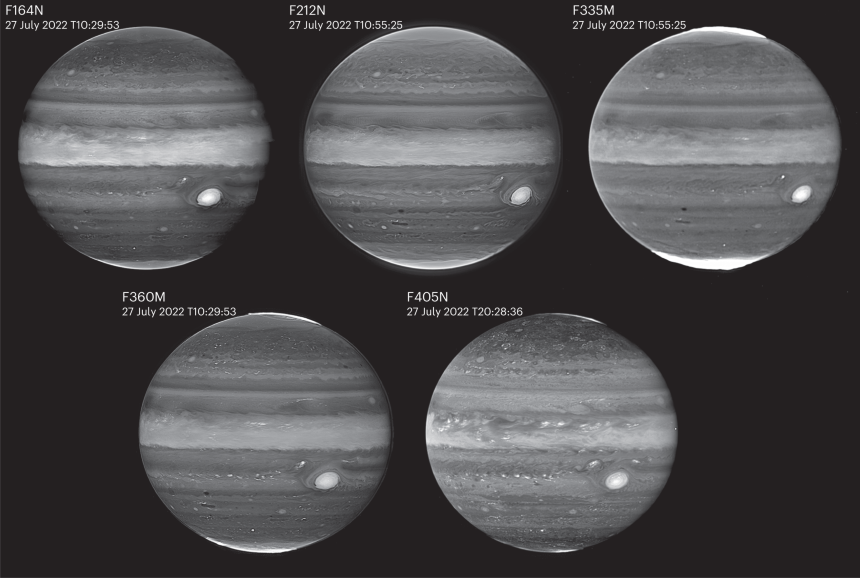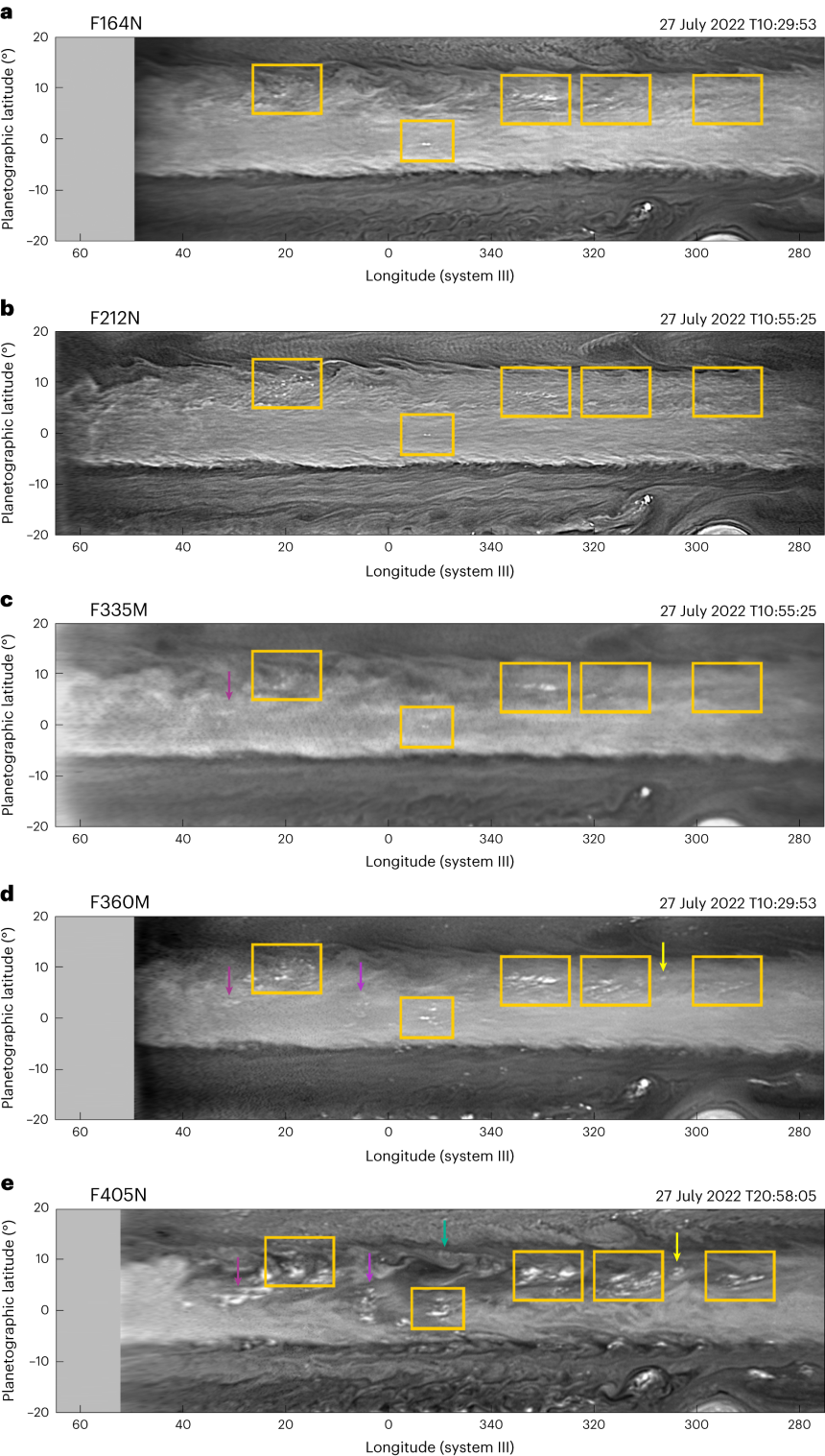James Webb Space Telescope Discovery
Clicking on each image will open the full resolution one. Try it!Clicking on "Raw images" image will yield all the relevant raw images.
Webb Discovers New Feature in Jupiter’s Atmosphere
Researchers using the NASA/ESA/CSA James Webb Space Telescope’s NIRCam (Near-Infrared Camera) have discovered a high-speed jet stream sitting over Jupiter’s equator, above the main cloud decks. At a wavelength of 2.12 microns, which observes between altitudes of about 20-35 kilometers above Jupiter’s cloud tops, researchers spotted several wind shears, or areas where wind speeds change with height or with distance, which enabled them to track the jet. This image highlights several of the features around Jupiter’s equatorial zone that, between one rotation of the planet (10 hours), are very clearly disturbed by the motion of the jet stream.
The discovery of this jet is giving insights into how the layers of Jupiter’s famously turbulent atmosphere interact with each other, and how Webb is uniquely capable of tracking those features. Researchers are looking forward to additional observations of Jupiter with Webb to determine if the jet’s speed and altitude change over time.
These results were recently published in Nature Astronomy.
These findings may help inform ESA’s Jupiter Icy Moons Explorer, Juice, which was launched on 14 April 2023. Juice will make detailed observations of the giant gas planet and its three large ocean-bearing moons — Ganymede, Callisto and Europa — with a suite of remote sensing, geophysical and in situ instruments. The mission will characterise these moons as both planetary objects and possible habitats, explore Jupiter’s complex environment in depth, and study the wider Jupiter system as an archetype for gas giants across the Universe.
Credit: NASA, ESA, CSA, STScI, R. Hueso (University of the Basque Country), I. de Pater (University of California, Berkeley), T. Fouchet (Observatory of Paris), L. Fletcher (University of Leicester), M. Wong (University of California, Berkeley), J. DePasquale (STScI)
 Jupiter jet pullouts
Jupiter jet pullouts
Astronomers using the NASA/ESA/CSA James Webb Space Telescope have discovered a high-speed jet stream traveling over Jupiter’s equator above the main cloud decks. The jet is traveling 515 kilometers per hour. It is located around 40 kilometers in altitude, in Jupiter’s lower stratosphere, just above the tropospheric hazes next to the boundary between the layers.
Jupiter has a layered atmosphere, and this illustration displays how Webb is uniquely capable of collecting information from higher layers of the altitude than before. Scientists were able to use Webb to identify wind speeds at different layers of Jupiter’s atmosphere in order to isolate the high-speed jet. The observations of Jupiter were taken 10 hours apart, or one Jupiter day, in three different filters, noted here, each uniquely able to detect changes in small features at different altitudes of Jupiter’s atmosphere.
 Jupiter’s atmosphere
Jupiter’s atmosphere
This image of Jupiter from NASA’s James Webb Space Telescope’s NIRCam (Near-Infrared Camera) shows stunning details of the majestic planet in infrared light. In this image, brightness indicates high altitude. The numerous bright white "spots" and "streaks" are likely very high-altitude cloud tops of condensed convective storms. Auroras, appearing in red in this image, extend to higher altitudes above both the northern and southern poles of the planet. By contrast, dark ribbons north of the equatorial region have little cloud cover.
In Webb’s images of Jupiter from July 2022, researchers recently discovered a narrow jet stream traveling 320 miles per hour (515 kilometers per hour) sitting over Jupiter’s equator above the main cloud decks.
 Jupiter (NIRCam Image)
Jupiter (NIRCam Image)
 NIRCam images of Jupiter
NIRCam images of Jupiter
 Multiwavelength maps of the equatorial region
Multiwavelength maps of the equatorial region
 Sketch of Jupiter and Saturn equatorial dynamics
Sketch of Jupiter and Saturn equatorial dynamics
 Jupiter observed by JWST, and its equatorial jet
Jupiter observed by JWST, and its equatorial jet
 Raw images
Raw images